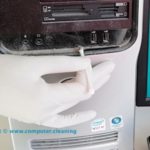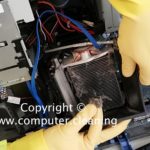When the world entered the atomic age, the problem or the dangers of disposal of nuclear waste were not fully realized. It is now becoming increasingly clear that safe disposal of nuclear waste is not easy and simple.
Radioactive Wastes Types
Radioactive wastes are of two types
(1) low-level radioactive wastes (LLW) which include civilian applications of radionuclides in medicine, research and industry, materials from decommissioned reactors, protection clothing worn by persons working with radioactive materials or working in nuclear establishments.
(2) High-level radioactive wastes (HLW) results from spent nuclear fuel rods and obsolete nuclear weapons.
Methods of Disposing
Some proposed methods of disposing of nuclear waste are:
• bury it deep underground in insulated containers. This is a strategy being pursued in the United States.
• shoot it into the space or into the sun. The cost would be very high and a launch accident should be disastrous.
• bury it under the ice sheet of Antarctica or Greenland ice cap. The ice could be destabilized by heat from the waste. The method has been prohibited by international law.
• dump it into deep oceans by keeping the waste into glass and steel cases. But the containers might leak and contaminate the ocean. Both HLW and LLW into the Atlantic ocean. The method is prohibited by international law. Until 1983, European countries had been dumping before 1983 when dumping was stopped, by law 90,000 metric tons of waste had been disposed of in the ocean.
• change it into harmless or less harmful isotopes. Currently, no method is known to do that and the method would be too costly.
• presently waste fuel rods are being stored in special storage ponds at reactor sites or sent to reprocessing plants. Even though reprocessing is more expensive but some countries use reprocessing as an alternative to waste storage.
Thus safe disposal of nuclear waste is a matter of debate.
Locations
Potentially usable sites or locations where nuclear waste can be disposed of should have some characteristics like-
• low precipitation;
• deep water table;
• slow moving groundwater;
• absence or near absence, of exploitable resources in the area;
• the absence of surface waters;
• low possibility of tectonic movement;
• adequate buffer zone (in case the waste gets loose).
Related Topics:
Methods for Reducing, Recycling, and Reuse of Wastes
Nuclear Hazards, Their Causes, Prevention and Control
Life Cycle Analysis OR Life Cycle Assessment





